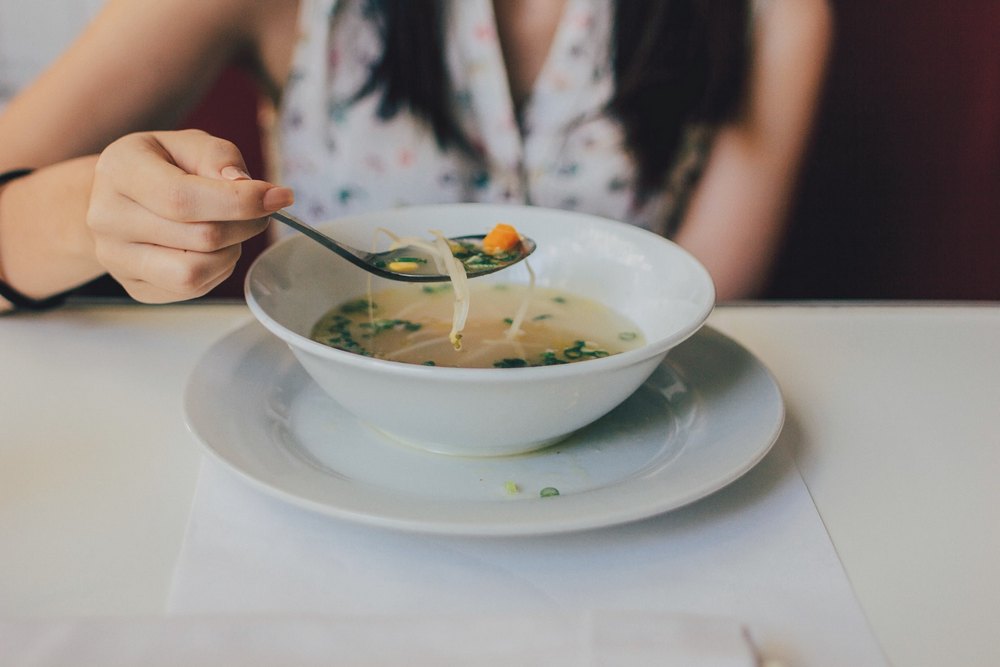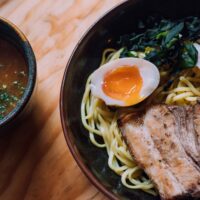Polish cuisine, with its rich flavors and hearty ingredients, is a testament to the country’s culinary heritage and cultural past. Each dish, from rosół z makaronem to pomidorowa zabielana śmietaną, carries a story of Polish life, reflecting the seasons, regional diversity, and historical influences. This article delves into some of the most beloved and traditional Polish dishes, unraveling the threads of history, culture, and taste that weave them into the fabric of Polish dining.
The Comforting Elegance of Rosół z Makaronem and Schabowy with Potatoes and Mizeria
Rosół z makaronem is not just a soup; it is a Sunday tradition in many Polish households, symbolizing warmth, family, and comfort. This clear broth, simmered gently with chicken, vegetables, and spices, is often served with a generous portion of noodles, creating a simple yet profoundly satisfying dish. The process of making rosół is a slow art, one that requires patience and care to extract the deepest flavors from its ingredients.
On the other hand, schabowy z ziemniakami i mizerią stands as a testament to the hearty and robust nature of Polish cuisine. The breaded pork cutlet, crispy on the outside and tender inside, pairs perfectly with creamy potatoes and mizeria, a refreshing cucumber salad dressed with sour cream. This dish reflects the Polish knack for turning simple ingredients into a meal that is both nourishing and deeply flavorful.
Exploring these dishes offers insight into Poland’s culinary ethos, where the emphasis is on quality ingredients, time-honored techniques, and the joy of sharing food with loved ones.
Diving Deep into the World of Pierogi: A Tale of Two Fillings
Pierogi are perhaps the most iconic of all Polish foods, a versatile and beloved staple that graces tables across the country. These stuffed dumplings come in countless variations, but two fillings stand out for their popularity and cultural significance: pierogi z farszem ser, ziemniaki, cebula, boczek and pierogi z farszem zmielone mięso z rosołu.
Pierogi z farszem ser, ziemniaki, cebula, boczek combine the creamy texture of cheese with the earthiness of potatoes, the sweetness of onions, and the smokiness of bacon, creating a harmony of flavors that is both comforting and indulgent. The preparation of these pierogi is a labor of love, often involving family members who gather to stuff, shape, and boil the dumplings in a communal cooking experience.
On the other side, pierogi z farszem zmielone mięso z rosołu utilize the rich and savory broth meat, offering a deeper, meatier flavor profile. This variation showcases the Polish penchant for resourcefulness and sustainability, utilizing leftovers to create a dish that is both practical and delicious.
From Kotlety Mielone to Pyzy z Sosem: Exploring Polish Comfort Food
Kotlety mielone and pyzy z sosem epitomize the soul-warming comfort that characterizes Polish cuisine. These dishes are staples in Polish homes, each carrying a sense of nostalgia and familial warmth that transcends their simple ingredients.
Kotlety mielone, Polish minced meat cutlets, are a beloved classic, blending finely ground meat with onions, bread, and eggs to create a tender, flavorful patty that is fried to a golden-brown perfection. This dish’s universal appeal lies in its simplicity and the comfort it provides, much like a warm embrace. Whether served with potatoes, a side of bright beetroot, or a dollop of creamy mushroom sauce, kotlety mielone is a testament to the comforting power of well-prepared, straightforward food.
Pyzy z sosem, on the other hand, are plump, pillowy potato dumplings that serve as a hearty base for a rich, savory sauce. Often, these dumplings are stuffed with a meat or cheese filling, adding an extra layer of flavor and texture. The sauce, typically a meat or mushroom gravy, is the crowning glory that brings the dish together, enveloping the pyzy in a velvety embrace that is deeply satisfying.
Exploring these dishes allows us to appreciate the robust, unpretentious nature of Polish comfort food, where the focus is on flavor, tradition, and the joy of a shared meal.
Bigos and Pomidorowa Zabielana Śmietaną: A Duo of Polish Classics
Bigos and pomidorowa zabielana śmietaną are two dishes that showcase the depth and diversity of Polish cuisine, each with its own story and a distinctive place in the country’s culinary landscape.
Bigos, often referred to as Polish hunter’s stew, is a hearty, flavorful dish made with a mix of sauerkraut, fresh cabbage, various cuts of meat, and a medley of wild mushrooms, prunes, and spices. It is a dish that evolves over days of cooking and reheating, deepening in flavor with each iteration. This complexity and richness make bigos a quintessential example of Polish culinary artistry, a dish that is both rustic and refined, offering a taste of the forest and the field in every bite.
Pomidorowa zabielana śmietaną, a creamy tomato soup enriched with sour cream, represents the lighter side of Polish cuisine. Its bright, tangy flavor profile offers a refreshing counterpoint to the more robust dishes like bigos or schabowy. The addition of sour cream tempers the acidity of the tomatoes, resulting in a soup that is both comforting and invigorating. Often served with rice or noodles, pomidorowa is a beloved staple, demonstrating the Polish ability to create dishes that are both simple and profoundly satisfying.
Together, bigos and pomidorowa zabielana śmietaną encapsulate the essence of Polish culinary tradition, a tradition that honors the past while continually evolving. Through these dishes, we gain insight into a cuisine that is grounded in the land and its seasons, a cuisine that celebrates the bounty of the harvest and the warmth of the kitchen hearth.









